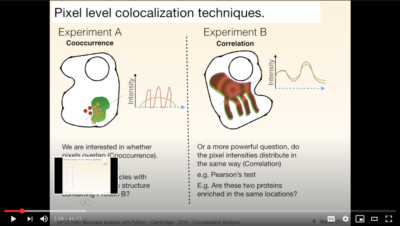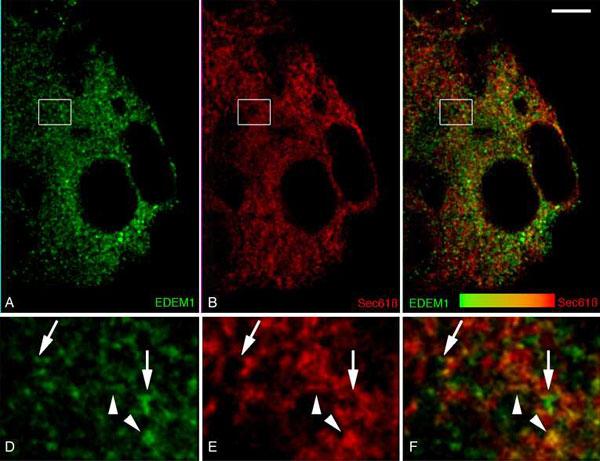
ColocChX = equals to 1, if the spot is colocalized in this channel (marked by X number) and 0 otherwise.Background value is calculated as the average intensity of pixels along the perimeter of the rectangle. IntegrIntChX = for each channel (marked by X number) shows spot’s integrated intensity: sum of all pixels intensity inside the thresholded area minus average spot-specific backgrounds.NArea = thresholded area of the spot in pixels.xMin, yMin, xMax, yMax = coordinate of rectangle around spot (in pixels).Frame = corresponding frame number (if timelapse).Slice = corresponding slice number (if z-stack).Channel = corresponding channel number, where the particle was detected.Y_(px) = y coordinate of spot (centroid fitting).X_(px) = x coordinate of spot (centroid fitting).Abs_frame = absolute frame number in stack/hyperstack (unique frame number).Here is example of Results table ( Summary table is kind of self-explanatory). Only ROI detection mode (as described above) also automatically works in this case. You can add all detected particles or only those that colocalize. ROIs will have names in the format of ind(detection# in Results table)_ch(#channel)_sl(#slice)_fr(#frame). Take a notice that “ Preview…” button in this case will only show detection, it will not mark/analyze colocalization.Īfter detection is finished ComDet marks detected particles with ovals/rectangles of their own channel (LUT) color and colocalized particles in overlapping color:Īlso Add to ROI Manager option is available.
#Colocalization imagej series#
So colocalization is based on the distance between spots’ centers!Īfter you press “OK”, a series of windows for detection parameters for each channel will pop-up: It defines at what distance (in pixels) two spots in different channels are considered to be localized. There is an additional parameter in case of colocalization: maximum distance between spots’ centers. If you uncheck it, then only detection will be performed. To get colocalization analysis you need to check “ Calculate colocalization?” box. If your image contains multiple channels then after pressing Detect Particles the dialog will look differently:įirst, the plugin will show the window above with general setup and later it will proceed with a series of parameter windows, specifying detection parameters for each channel.

In this case only particles in that ROI will be detected (also supported in “ Preview.” mode):ĭetection and colocalization in multi-channel image (two or more channels) If you want detection to be performed in some specific region instead of whole image, select some ROI using any ImageJ ROI selection tools before launching plugin: I recommend to play with parameters to get a nice detection result. ROIs will have names in the format of ind(detection# in Results table)_ch(#channel)_sl(#slice)_fr(#frame).Īfter pressing OK plugin runs and add ovals/rectangles in overlay on top of detected particles.Īlso it will provide you Results table containing particles’ coordinates (see below) and Summary table. If you choose Add to ROI Manager option (“All particles”), plugin will add detected rectangular ROIs around particles to ROI Manager. As its name suggests, this procedure requires computational power and can be slow, especially on big images. If “ Segment larger particles (slow)?” box is checked, plugin will try to further split large particles into a smaller dots, if it is possible.

If you check “ Include larger particles?” box, it will also try to quantify bigger spots. The “ROI shape” option allows you to choose, if you want your detection to be displayed as “Ovals” or “Rectangles”.īy default, plugin looks only for particles of specified size. Checkbox “ Preview…” allows to see detection on the current picture and simplifies this task. To have good detection usually you need to play with parameters and see how it goes. Specify estimated particles size and intensity threshold (particle brightness) and press OK. If the image is not multi-channel image, the following dialog window will appear: Launch the detection by choosing Plugins › ComDet › Detect Particles. Plugin auto-detects the number of channels and if it is more than one then the plugin will automatically switch to the second mode (see below). particles detection and colocalization analysis (whole image or ROI).įor colocalization you need a color composite image containing multiple color channels (two or more).particles detection (whole image or ROI).In general, the plugin works in two modes: Plugin for finding and/or analyzing colocalization of bright intensity spots (cells, particles, vesicles, comets, dots, etc) in images with heterogeneous background (microscopy, astronomy, engineering, etc).įor help with plugin installation, see instructions.


 0 kommentar(er)
0 kommentar(er)
